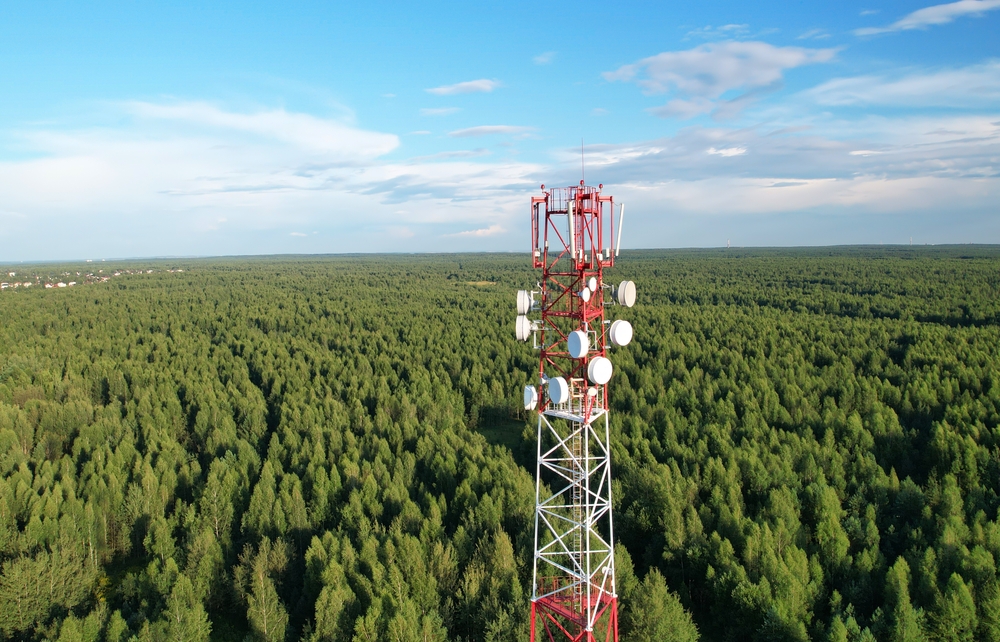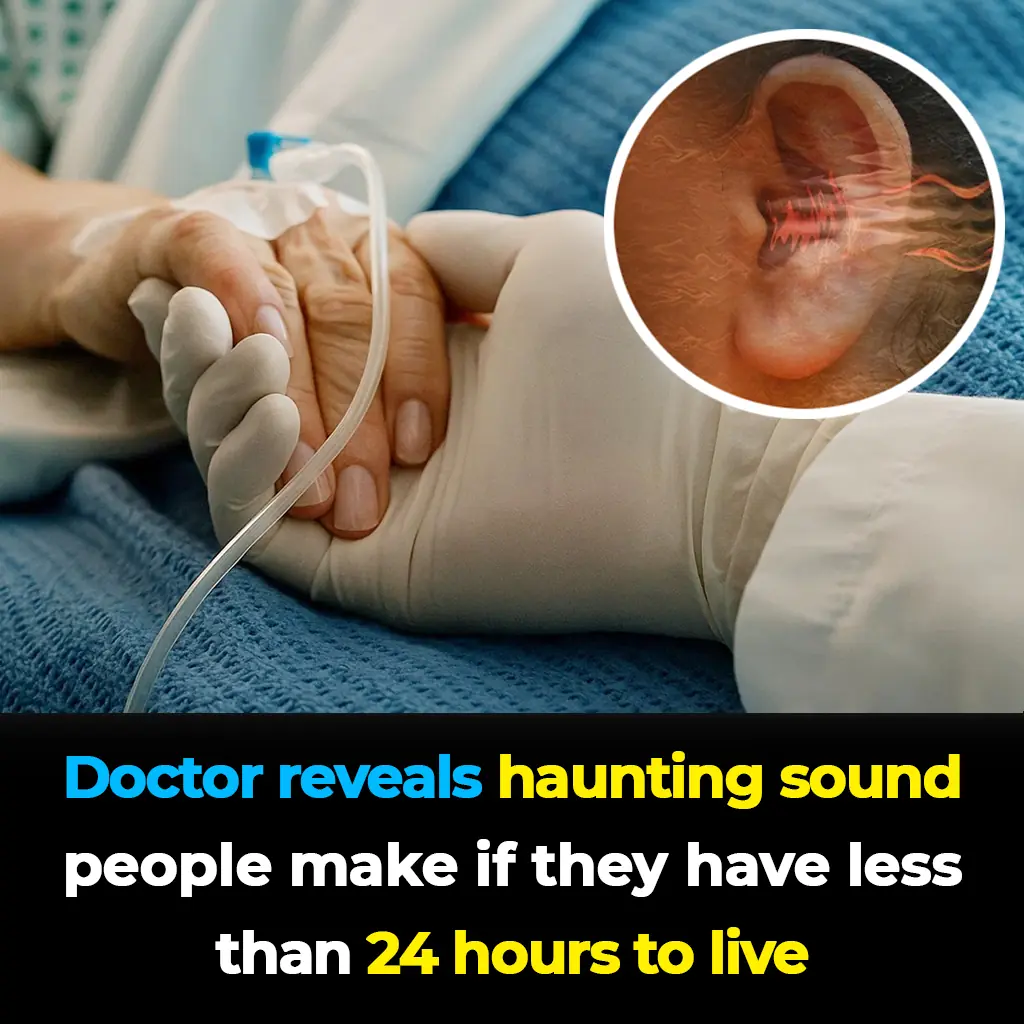
Extreme levels of damage has been discovered on trees near cell phone towers

Are Cell Towers Harming Our Trees? The Hidden Environmental Cost of Wireless Connectivity
As global demand for mobile connectivity intensifies, a vast yet largely invisible web of wireless infrastructure has taken root across urban centers, suburban neighborhoods, and even remote rural landscapes. Cell phone towers—unobtrusive and often standing beside schools, parks, and residential streets—have become so seamlessly woven into the fabric of daily life that their presence is barely noticed. They are indispensable to modern communication, powering everything from emergency calls to GPS navigation and mobile streaming. But behind this convenience, a growing body of scientific research is sounding a quiet but urgent alarm: these towers may be contributing to an overlooked form of environmental damage, particularly to trees.
Among the most unsettling findings is a consistent pattern of tree decline observed in the vicinity of mobile phone base stations. This damage—often unilateral and inexplicable by traditional stressors like drought, pests, or pollution—is now drawing scrutiny from scientists around the world. What began as scattered observations by researchers and environmentally conscious citizens has matured into a broader inquiry: could the radiofrequency electromagnetic fields (RF-EMFs) emitted by cell towers be quietly undermining the health of our urban forests?

A Decade-Long Study in Germany Uncovers a Disturbing Pattern
From 2006 to 2015, a rigorous field study was carried out in the German cities of Bamberg and Hallstadt to investigate this very question. Researchers mapped radiation levels from mobile phone towers across a wide urban area, conducting 144 RF-EMF measurements at a consistent height of 1.5 meters in public spaces. They then monitored 120 trees, divided into three categories: 60 trees showing visible damage, 30 randomly selected trees, and 30 trees located in low-radiation zones where cell towers were either absent or distant enough that power flux density stayed below 50 μW/m².
The results were striking. Trees exposed to higher radiation levels were significantly more likely to show abnormal deterioration—particularly on the side of the tree facing the nearest antenna. Symptoms included thinning crowns, yellowing or discolored leaves, bark abnormalities, branch dieback, and reduced growth. Often, only one side of the tree was affected—producing a dramatic visual asymmetry that conventional explanations failed to justify.
Notably, the opposite side of these same trees, which was shielded from direct radiation exposure, typically remained healthy. Statistical analysis revealed a clear correlation between RF-EMF exposure and the location and severity of damage. This directional effect strongly suggests that it wasn’t random environmental factors at play—but rather something spatially fixed and persistent, such as electromagnetic radiation.
Trees as Silent Sentinels of Environmental Stress
What makes these findings particularly compelling is the suitability of trees as long-term indicators of environmental stress. Unlike animals or humans, trees are immobile and remain in a fixed orientation throughout their lifespan. This unique trait makes them ideal subjects for monitoring the effects of chronic exposure to environmental conditions, including radiation. Over time, their stationary nature allows for precise observation of how exposure from a specific direction—such as a nearby cell tower—impacts their health.
Symptoms of stress observed in these studies—like leaf discoloration, bark cracking, and crown asymmetry—mirror those reported in historical plant studies dating back to the 20th century. Early research by scientists such as Kiepenheuer and Harte, though limited to laboratory settings, found similar effects of electromagnetic radiation on plant physiology. Today’s field studies are echoing those early findings, but in real-world urban ecosystems, with much wider implications.
The fact that trees—often robust and long-lived—are showing measurable signs of distress from RF-EMFs raises a deeply concerning question: if trees are vulnerable, what about smaller or more sensitive organisms that form the foundation of local ecosystems? Could birds, pollinators, or even soil microbiota be affected in ways that we haven’t yet measured?

Scientific Uncertainty and Gaps in Regulation
Despite the mounting evidence, the scientific community remains divided. One reason is the variability in experimental conditions—such as plant species, environmental context, or radiation source intensity—which makes direct comparisons between studies difficult. Nevertheless, a 2013 review by Jayasanka and Asaeda concluded that biological effects—ranging from altered growth rates to impaired photosynthesis—were consistently observed even at radiation levels far below accepted international safety limits.
Why, then, are these effects not more widely acknowledged in environmental regulation? The answer lies in outdated safety standards. Current exposure limits, such as those issued by the International Commission on Non-Ionizing Radiation Protection (ICNIRP), are designed primarily to prevent thermal injury in humans—not to protect wildlife or plants from chronic, low-intensity exposure. Non-thermal biological effects are often dismissed or overlooked entirely.
This regulatory gap has profound implications. In most jurisdictions, mobile towers can be installed without detailed environmental assessments—particularly in urban areas where tree coverage is dense. In doing so, planners may be inadvertently exposing green spaces to prolonged radiation stress, potentially undermining the very ecosystems meant to improve city resilience.
A Global Pattern Emerges
What began as a localized concern in Germany is now being observed across multiple continents. Researchers in Spain, the Netherlands, the United States, and other countries have reported similar findings: trees exhibiting one-sided damage, leaf loss, and bark degradation—always in proximity to cellular antennas. Ecologist Alfonso Balmori in Spain, for example, has documented consistent tree injuries that begin on the side facing the nearest transmitter and slowly progress across the canopy.
This phenomenon crosses climatic zones, species types, and urban conditions, suggesting a global environmental footprint tied to our shared wireless infrastructure. Unlike pathogens or air pollutants, which tend to affect specific species or display variable symptoms, RF-EMF damage appears across diverse plant types with similar visual markers—underscoring its potentially systemic nature.
Yet despite this growing body of field evidence, policy responses have been minimal. The slow progression of damage, combined with the technical complexity of radiation science, makes it easy for the issue to be overlooked. But the ecological cost of ignoring these signs could be enormous.
The Broader Ecological Implications
Urban trees do far more than decorate our streets—they provide shade, improve air quality, reduce heat islands, sequester carbon, and offer habitat to countless creatures. When they decline, entire networks of ecosystem services begin to unravel. And if the damage to trees is an early indicator of a wider biological impact, then pollinators, birds, amphibians, and other sensitive species may also be at risk—especially in densely networked cities.
The stakes are rising with the global rollout of 5G networks, which will increase the number and density of antennas while introducing higher-frequency radiation. Though touted for their speed and efficiency, 5G systems bring with them new unknowns about long-term environmental exposure. Without updated regulations that account for ecological effects, we risk expanding infrastructure that may be silently degrading the natural systems we depend on.

A Call for Sustainable Connectivity
As the digital age accelerates, we are presented with a choice: continue expanding technological networks without addressing their environmental consequences, or take a more balanced approach that prioritizes both innovation and ecological responsibility. The evidence from studies like the one in Germany makes it clear—ignoring the warnings encoded in our trees comes at a price.
Governments and urban planners must act proactively. This means updating RF-EMF safety standards to reflect current science, requiring environmental impact assessments for new antenna installations, and supporting interdisciplinary research into long-term ecological effects. Community engagement is also essential; by informing the public and giving them a voice in planning decisions, we create pressure for more thoughtful deployment of infrastructure.
Ultimately, we must redefine what progress looks like. If our pursuit of faster, smarter connectivity leads to the degradation of natural ecosystems, then that is not progress—it is a trade-off we cannot afford. Trees, rooted and silent, may be giving us one final chance to listen before the damage becomes irreversible.
By respecting what the natural world is quietly revealing, we have an opportunity to steer technological development in a direction that safeguards both human advancement and the ecosystems that sustain it.
News in the same category


10 Warning Signs Your Kidneys May Be in Serious Danger
Your kidneys quietly work around the clock to keep your body in balance, but when they start to fail, the symptoms can be subtle and easily overlooked. Spotting these early warning signs could save your health—and even your life.

What You See First In This Weird Optical Illusion Reveals What Kind Of Lover You Are
Optical illusions can do more than just play tricks on your mind — they can reveal hidden aspects of your personality, including how you express love. In this unique test, the first image you notice will uncover your deepest romantic traits and the way

Beekeeper Sets Bees Loose on Police That Pulled Him Over for Traffic Stop

The ‘World’s D3adliest Food’ K!lls 200 People Annually — Yet 500 Million Still Can’t Resist It
Every year, this claims over 200 lives worldwide, yet nearly half a billion people still rely on it as a daily food source. Experts warn that without proper preparation, this staple crop can turn d:eadly due to its natural cyanide content.

The Hidden Meaning Behind Women's Leg-crossing — It’s More Than Just Comfort
The Hidden Meaning Behind Leg-Crossing — Body Language Secrets, Health Risks, and What It Really Says About You.

Say Goodbye to Fillings Soon? Scientists Just Grew Real Human Teeth In a Lab That Could Replace Fillings Forever
What if your body could suddenly remember an ability it lost thousands of years ago - the power to grow an entirely new tooth?

The Chilling Truth About Why No Human Remains Were Found in the Titanic Wreck
More than 110 years after the Titanic sank, scientists have revealed the chilling reason no human remains were ever found in its wreckage. Resting 12,000 feet below the Atlantic, the site tells a silent story of how nature claimed the victims in its own w

9 Chilling Stories of Third Man Syndrome: When an Unseen Presence Aided Survival in Disasters

I Was Shamed for Being a Single Mom at My Sister’s Baby Shower — Then My 9-Year-Old Son Silenced the Room with a Letter

9-Year-Old Boy Whispered “Daddy, I’m so tired!” and Didn’t Wake Up Again

What Is the Shark Fin on Cars?

Scientists Discover New Blood Type Only Found In One Woman On Earth Today

If You Notice a Purple Butterfly Sticker by a Newborn’s Bed—Here’s the Silent Tragedy Behind It
It's not just a decorative element. It's a symbol.

If You See A Woman Wearing A Wedding Ring On Her Pinky Finger Here’s What It Means
If you see a woman wearing a wedding ring or statement ring on her pinky, know that there’s likely a story behind it.

Here Are 5 Reasons Why Some Men Prefer Slim Women
Slimness might be appealing to some men for reasons ranging from health to aesthetics, but personality, kindness, intelligence, and emotional compatibility often matter far more in the long run.

Doctors Explain The Chilling Sound A Person Makes That Means They Have Less Than 24 Hours To Live
Understanding what the sound signifies — and knowing that the individual is not suffering — can provide comfort in an otherwise heartbreaking moment.

“I Di3d for 6 Minutes and Saw the Afterlife — What I Witnessed Still Haunts Me”
A guy has described the eerie sights he says he seen in paradise after he ‘died’ for six minutes as a child.
News Post

A Late-Night Uber Ride That Changed a Life.

The Only Thing My Late Dad Left Me Was a Rusty Key, and I Thought It Was a Joke Until My Cousin Offered Me $10,000 for It – Story of the Day

You Should Never Ignore These 9 Things Your Fingernails Reveal About Your Health

Scientists Warn Foot-Long “Demonic Flesh-Eating” Worms Are Invading The U.S.—Here’s What To Do

Officials Warn Tourists As Giant Toxic Jellyfish Washes Ashore At Popular Beach

When Nighttime Leg Cramps Become a Concern

One Month Before A Heart Attack, Your Body Will Warn You Of These 7 Signs

Coca‑Cola Fires Back After Trump Claims He Switched The Coke Recipe

Researchers Sound Alarm Over Surge In Anal Cancer And High-Risk Populations

5 Things Doctors Say You Should Never Give Your Kids to Help Prevent C@ncer

6 Powerful Castor Oil Benefits for Your Health and Wellness

A Wild Kingfisher, Three Generations, and the Unspoken Language of Love.

More Than a Win: The True Victory of the Cooma North Boys.

Moment two AI agents realise they're talking to another AI and switch to their own bizarre language

Woman earns hundreds every day just by sitting in New Yorker's cars

My Husband Threw Away the Chicken I Cooked Saying 'You'll Thank Me Later' – When I Found Out Why, I Filed for Divorce

The Ride That Changed Everything.

My Sister Brought My Ex to My Wedding and I Was Stunned, but Then Her Speech Changed Everything – Story of the Day

10 Warning Signs Your Kidneys May Be in Serious Danger
Your kidneys quietly work around the clock to keep your body in balance, but when they start to fail, the symptoms can be subtle and easily overlooked. Spotting these early warning signs could save your health—and even your life.
